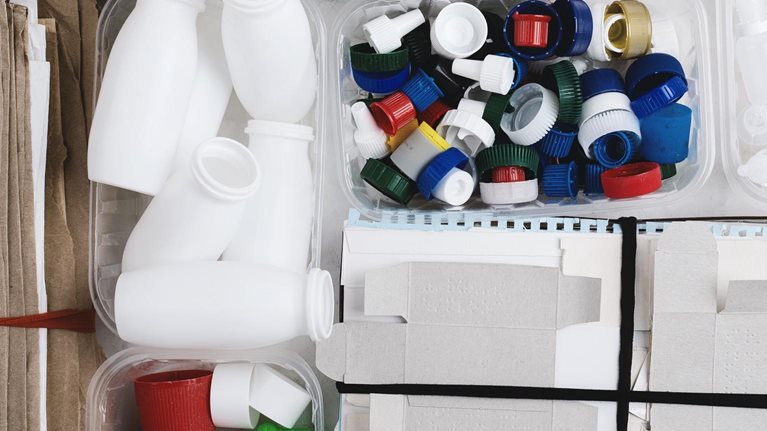Productivity in the paper industry1 peaked in 2018 and has swiftly declined in the following years (Exhibit 1). Even with various improvements in 2021, productivity is still 8 percent lower than it was in 2016. Therefore, it is crucial for pulp and paper companies to track the main drivers of productivity for their assets and focus on initiatives to increase sustainable productivity increases over the long term.

The PaperLens Index (PLI) offers insights into the industry’s main productivity drivers. The index gathers data from the latest public company reports and websites of 59 major global players in the pulp and paper industry, which is then supplemented by proprietary data sources.2 The index uses this data to analyze how material of different grades is produced and with what level of resources. Resources include property, plant, and equipment (PP&E) capital; operating expenditures; and human resources. These factors are weighted based on their importance. As a result, the index not only minimizes the influence of grades and product prices by excluding revenues but also considers the cost inflation that pulp and paper companies are facing.
Using analysis from the PLI, the productivity peak in 2018 can be explained by a combination of reduced PP&E companies value and a constant increase in the total material produced. After 2018 and until 2020, substantial increases in capital, operational expenditures, and human resources have not resulted in a proportional increase in production (Exhibit 2). This means additional tonnage increases are arriving at disproportionally high capital and operating costs.

In 2021, pulp and paper players slightly increased productivity despite lower production by keeping both PP&E and operational expenditures under control. However, growth in the workforce has limited a larger increase in productivity.
Although the PLI shows a general decline in productivity of 8 percent since 2016, 19 companies among the 59 analyzed increased their PLI scores in this time frame (Exhibit 3). These 19 companies can be categorized within two groups:
- Group one includes companies that have newer technology in their mills as well as production volume growth alongside unit cost decreases. These companies benefit from the latest digital manufacturing technologies, which translate into higher productivity performance.
- Group two includes companies that have less advanced technology in their mills. In these companies, production volume is stable or decreasing (sometimes through asset divestments) while both unit and total costs are reducing. For companies in this group, initiatives in operational excellence and cost control help maintain a high level of productivity.

Looking at the different grades, we see that levels of productivity are following the general trend of decline in the industry (Exhibit 4). However, although grades such as specialties paper have experienced significantly larger decreases, others, such as containerboard, have seen productivity shrink by as little as 1 percent.

Industry leaders can address the challenge of improving productivity in ways other than simply adding new production lines. On this point, three critical areas of focus can help address the root causes of productivity decline:
- Prioritizing operational excellence. Solutions for tight cost control often arise during lean transformations. Companies that have successfully implemented operational excellence programs were able to achieve as much as 10 percent in additional overall equipment effectiveness. Increased asset availability is typically realized through improved machine reliability and preventive maintenance. Faster machine speeds and more operating time comes from SKU-specific speed targets and new standard operating procedures. Finally, production capacity can be debottlenecked by deploying systems to measure, analyze, and improve the progress of KPIs over time.
-
Sustaining innovation and enabling digital technologies. Digital technologies, research-based recommendations, and other innovations can enable productivity gains. In our experience, three domains matter:
Process digitalization. Digitalize business processes to centralize the flow of information and the proliferation of data.
Advanced analytics. Use new analytical methods and control strategies to support autonomous piloting and enable real-time decision making.
Robotics and automation. Give staff members the opportunities to expand productivity through automated material handling and reduce the risk of working in hazardous environments.
Companies that have successfully achieved a digital transformation were able to unlock an additional 5 to 17 percent in EBITDA.
- Increasing capital productivity by selecting the best projects for sustaining and growing capital expenditures. This can be done by providing guidance related to how much to spend and what constitutes a good project. Business case reviews can be conducted to evaluate potential projects, and fact-based evaluations relying on value-based metrics can enable apples-to-apples comparisons. Rankings and trade-off discussions can help prioritize projects. Finally, project value improvement can optimize scope and procurement and enable sound execution during the construction phase, while lean management can shorten the ramp-up phase.
Overall, new capabilities can help companies shift from risk-focused decisions to risk-, value-, and sustainability-based trade-offs.
For more info on PaperLens, contact us at PaperLens@McKinsey.com.


